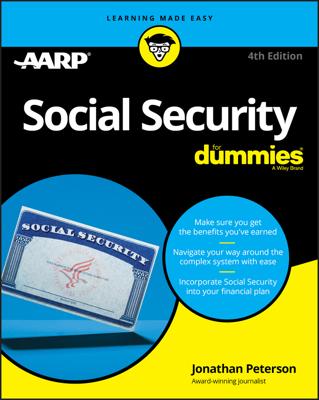Copyright © 2015 AARP
In business for yourself? The Social Security Administration considers you self‐employed if you operate a trade, business, or profession. You can be a one‐person operation, or maybe you have partners. Either way, you face a particular set of Social Security rules — and realities.
Many self‐employed people are admirably independent and thrive on running their own show. The SSA is about rules and documentation. Keeping that in mind may help you have a good relationship with the SSA when the time comes to claim your benefits.
Unlike the typical wage earner who earns Social Security coverage, a self‐employed person occupies two roles: employer and employee. Nobody’s going to take care of your deductions for you. You report your own earnings and pay your own taxes to the IRS. You pay a different payroll tax, and you may qualify for Social Security credits through a different calculation than the one used for wage earners. You can read an overview of issues for the self‐employed on the Social Security website.
The SSA has certain special requirements when you work for yourself, as well as a level of scrutiny that may exceed the norm. The fine print applies to deductions, earnings credits, and reporting.
If you’re self‐employed, keep good financial records — and be prepared to back them up. The SSA may review the earnings information you provide with more care than is applied to the average wage earner. Make sure that you can justify everything you say about your earnings.
Tax deductions
Self‐employed people pay Social Security taxes on their net earnings from self‐employment. This is basically your net profit from your business, plus or minus some additional adjustments. Because self‐employed people occupy the role of employer and employee, they have to pay both shares. But you can reduce your taxable income by half your Social Security tax on the 1040 IRS form.
This is so the self‐employed are treated similarly to employees who don’t pay any income tax on the share of Social Security taxes paid by their employers.
Work credits
If you’re self‐employed, you may be able to use an optional method to obtain the credits you need to qualify for Social Security benefits. (Individuals typically need to earn 40 credits to be fully insured for retirement benefits. The amount may be lower for disability and survivor benefits.) There are two optional methods: one for earnings from a farming business and one for earnings from a nonfarm business. You may use both methods, if you’re eligible.
Under the optional methods, a self‐employed individual with low earnings may be able to obtain credits toward Social Security coverage that otherwise wouldn’t be available. You can use the nonfarm optional method five times in a lifetime. Here are details for how it works for nonfarm businesses. For farm businesses, check out these details.
You need to have gross income of not more than $7,200, or net profit of less than $5,198, to use the farm optional method (based on initial IRS guidelines for 2014). You may report two‐thirds of your gross income, up to $4,800, as your net earnings by using this method. Note that using the farm optional method can increase or decrease your net earnings from farm self‐employment, so you want to pay attention to the details if you use this method.
For the nonfarm optional method, you need to have net profit of less than $5,198 and less than 72.189 percent of your gross nonfarm income. You may report two‐thirds of your gross income, up to $4,800 (less the amount reported, using the farm optional method), as your net earnings by using the nonfarm optional method. Unlike the farm optional method, under this method you can’t report less than your actual net earnings from nonfarm self‐employment.
These calculations may sound complicated, but the directions on the IRS 1040 Schedule SE should help you do it without too much trouble. And it may be worth the effort, because even with low earnings, you can potentially get the maximum of four Social Security credits in a year by employing this method.
Earnings limit
If you’re self‐employed and getting early retirement benefits, the SSA wants to see firm evidence that you reported your income properly. It wants to confirm that you haven’t made your income look like less than it is to evade the earnings limit.
The SSA may consider certain details you report to be red flags, worthy of closer scrutiny. For example, if you’re still spending a lot of time on the job, if you remain in control of the business, or if you say you’ve shifted control to a relative, the SSA may take a magnifying glass to your report.
Before it’s satisfied, the SSA may take a close look at your previous tax returns and other documents, such as expense records.
Reporting requirements
If you’re self‐employed, you meet the SSA’s reporting requirements by filing the required tax forms on time with the IRS, if net earnings are $400 or more. These include Form 1040, Schedule C (Profit or Loss from Business) or Schedule F (Profit or Loss from Farming), and Schedule SE (Self‐Employment Tax).
Complete the IRS paperwork regardless of whether you owe any income tax and whether you already get Social Security benefits. If you’re self‐employed, the SSA expects you to fill out forms 1040 and SE.
When a married couple is self‐employed in a family enterprise, each spouse qualifies for Social Security earnings credits as a partner. But it’s possible for the SSA to overlook one of the spouses (typically, the wife) unless each partner files a separate Schedule SE. It makes no difference if you file a joint income‐tax return. If just one of you files a Schedule SE, that’s who gets all the Social Security credits.

